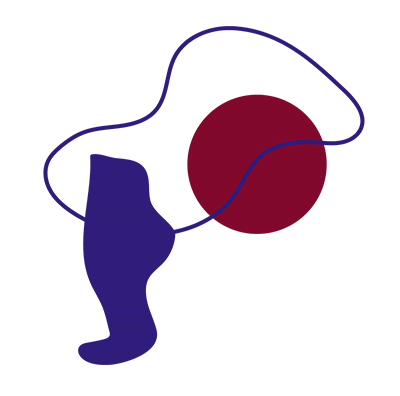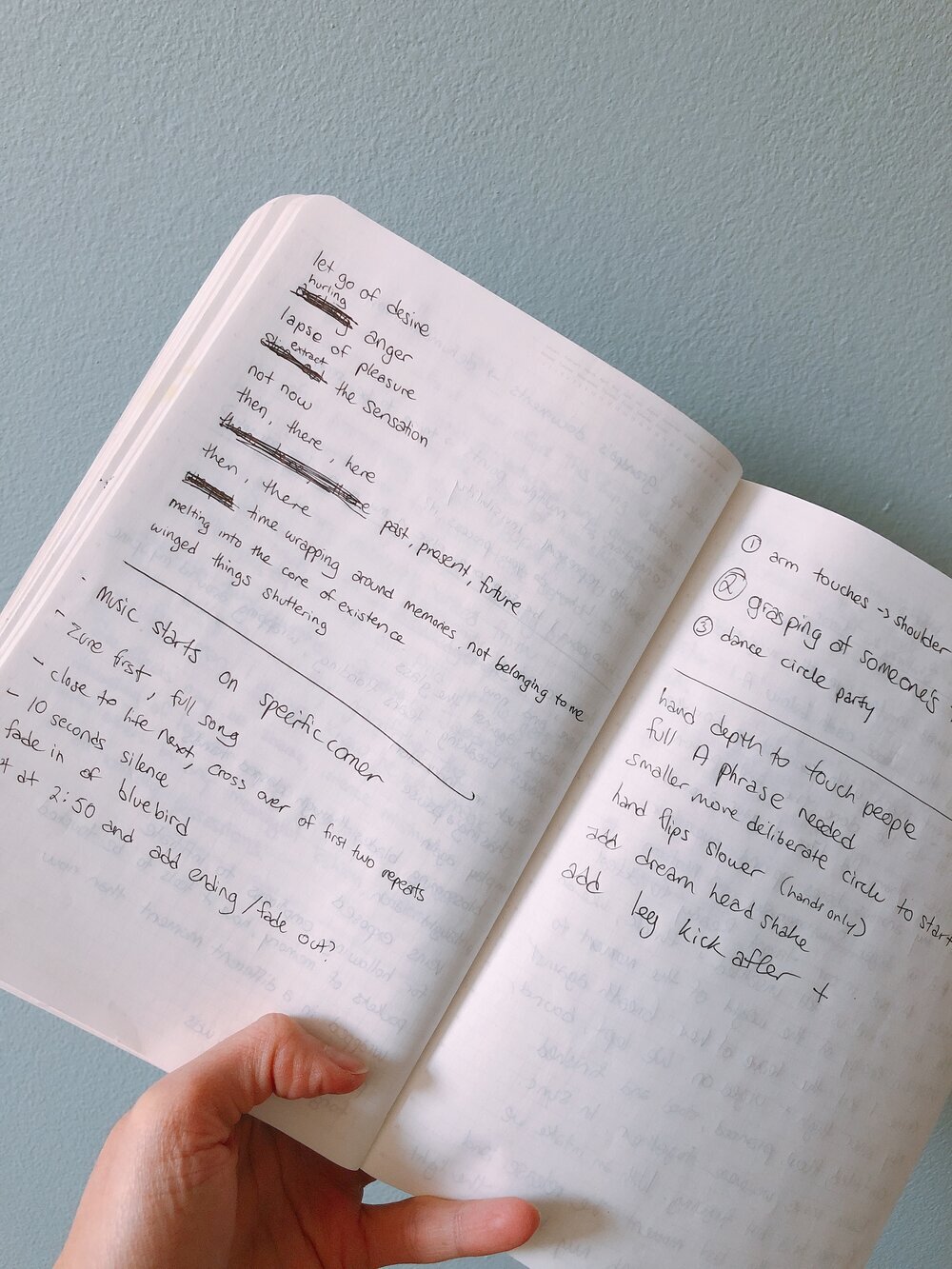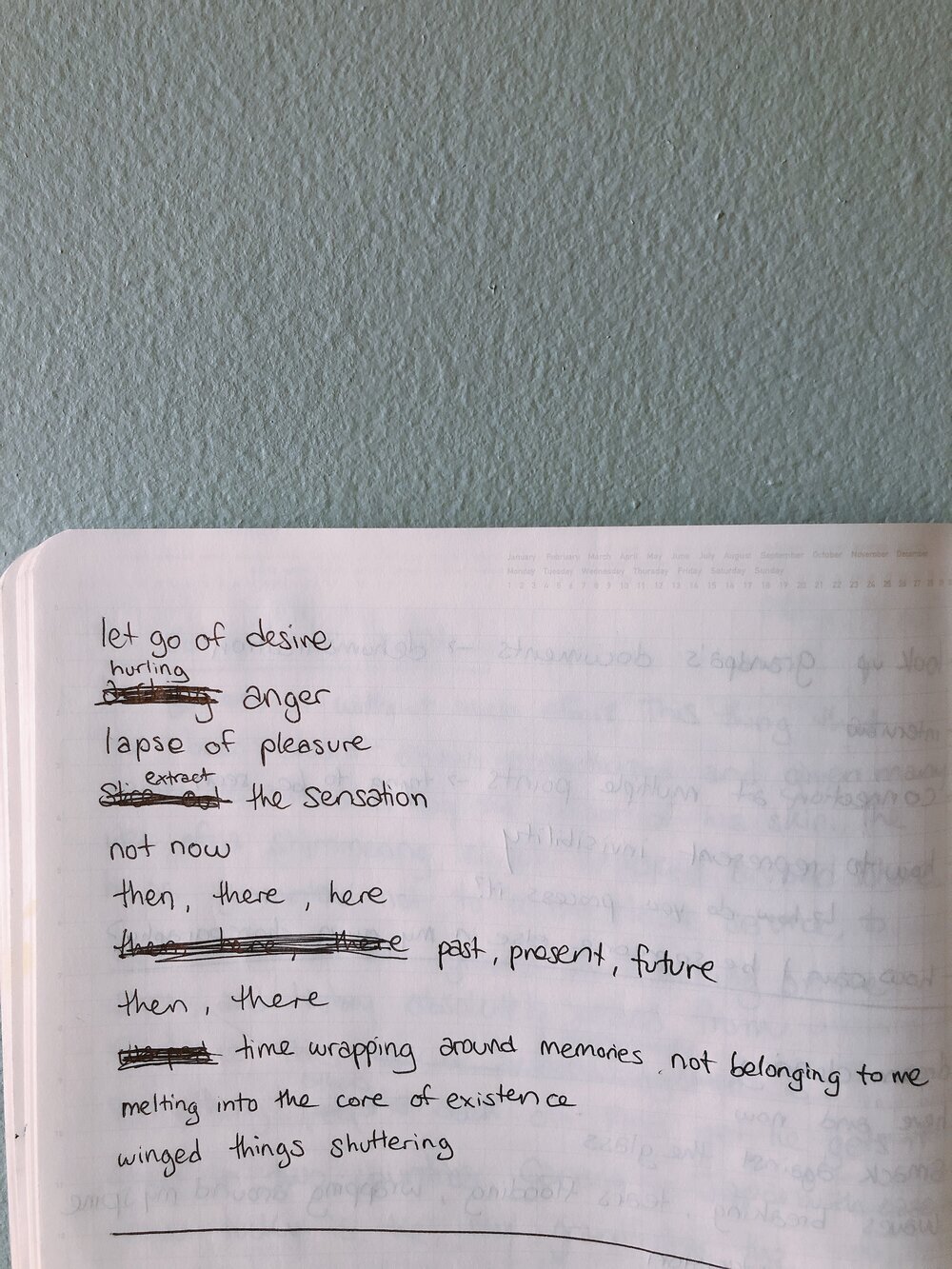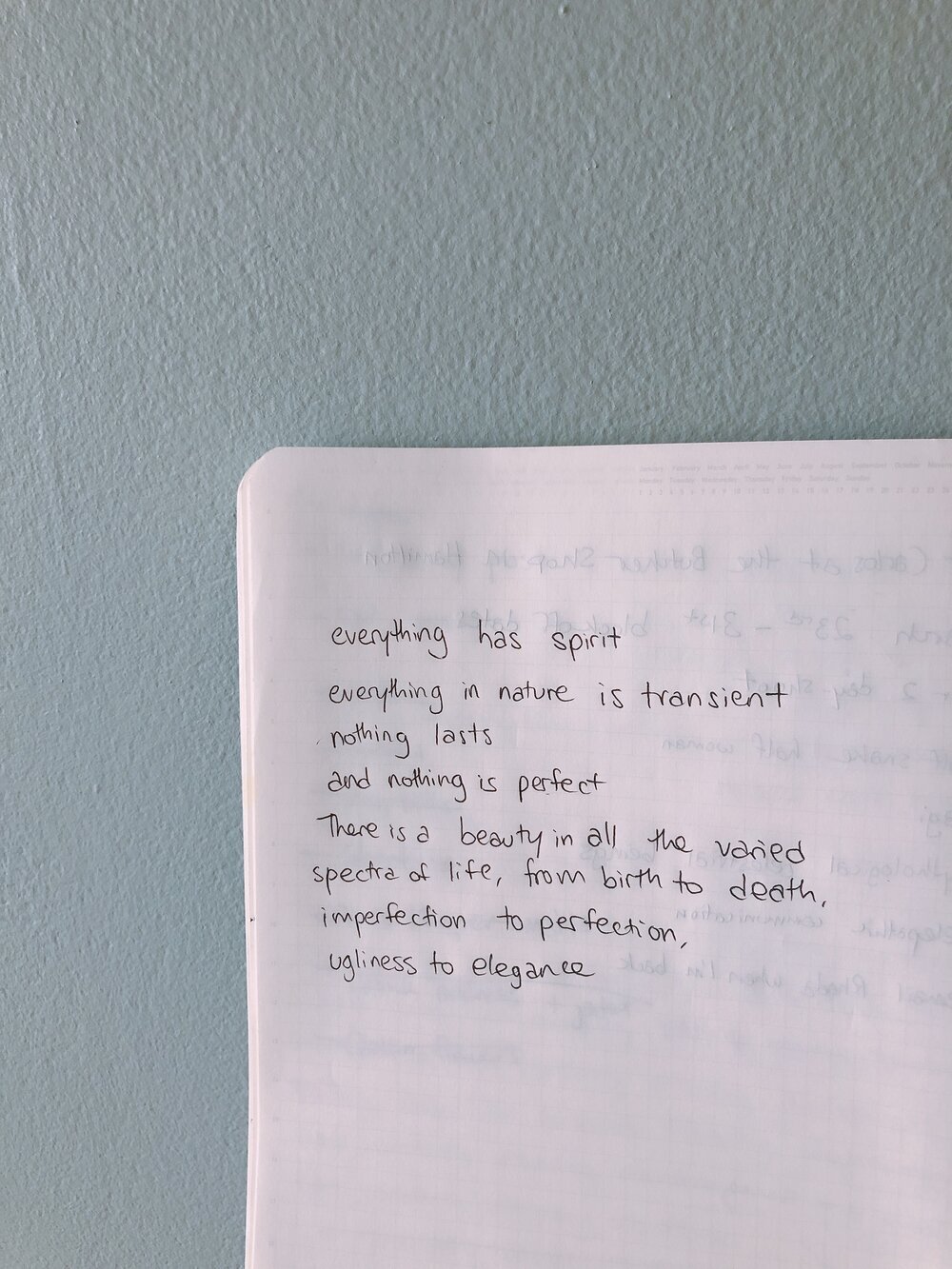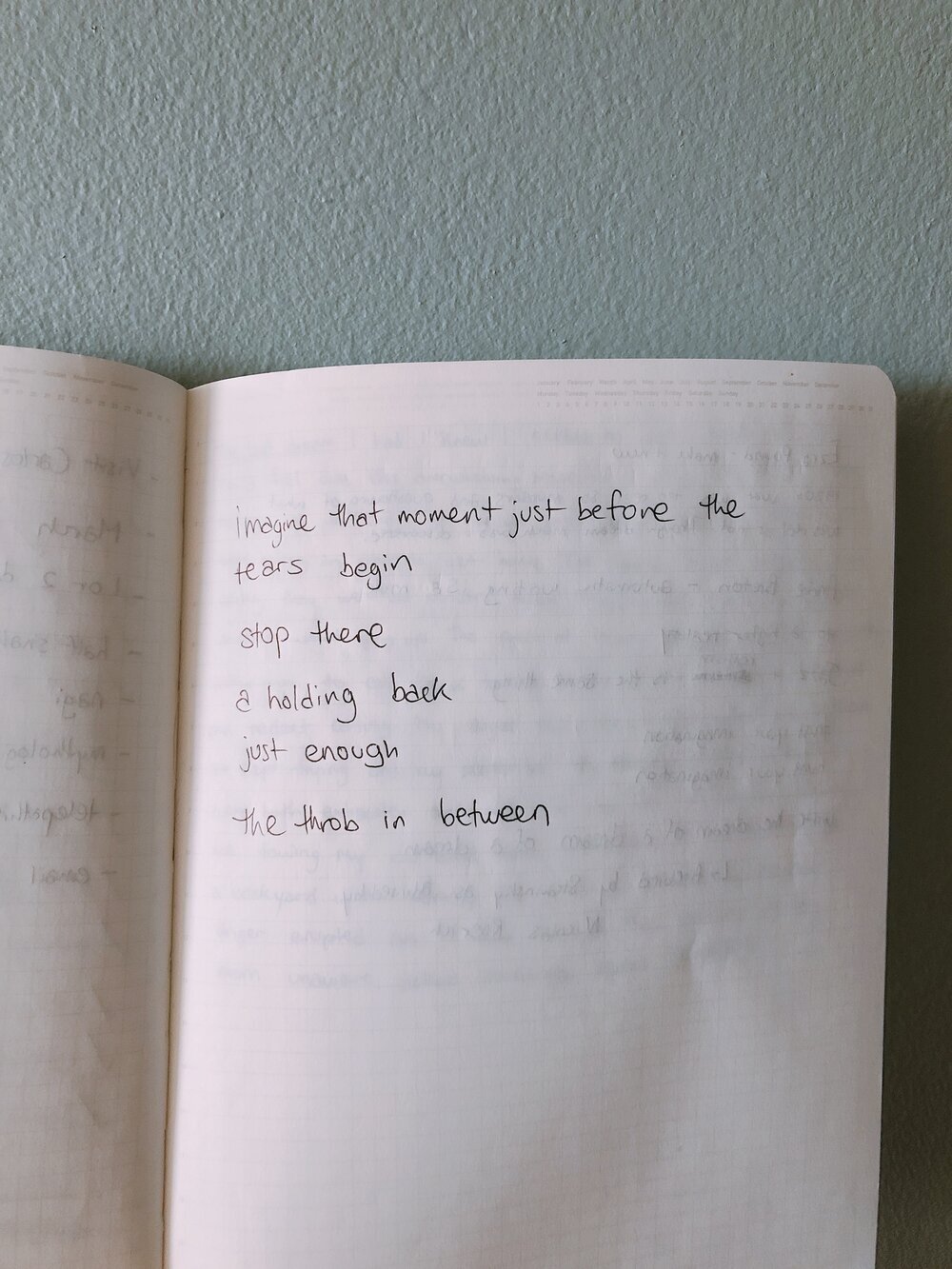Forming a New Creation - Part 2
by Mayumi Lashbrook
I was asked by someone learning english what exactly a residency is.
…
And I faltered on the answer. Having done several in different fashions, it was hard to bring them all together into one exact definition.
“But what is clear to me is that residency is about creation. Creating goals, creating new work, creating distance from the everyday, creating new habits, creating clarity.”
I chose to use my time at the L’AiR Arts residency as a way to begin a draft of a new creation brewing in my head. To form the creation, I made several tasks for myself and participated in the residency workshops geared towards creation. These were the things that impacted me most in making my solo in Of Ink. I started by dialoguing with the artists in the program, asking for their opinions and personal connection to alienation, trauma and reconciliation. I spoke about my inspiration; my japanese Grandfather’s experiences of alienation as a Canadian in WWII. I shared his stories and listened to the stories and reactions they sparked. I wrote down the images, feelings or thoughts that came up from those conversations.
I attended several workshops but two specifically had an impact on the creation. Matt Jones led a writing workshop looking at violence and studying angles of writing about horror. His vision into violence and dehumanization based on his time in the military in Afghanistan brought me into a horrific headspace I typically love to stay away from. It allowed me to consider that there may have been violence in my grandfather’s life that I am unaware of. That he also spent time being invisible and purposely dodging the gaze of others for fear of retaliation.
Hiie Saumma led a movement and visual art exploration where we moved while listening to her vocal prompts. She provided a landscape of prompts to guide our minds into our new creation and open our bodies to receiving that information. She coached that there is a heart to this new work, so take in what it is telling you. We then took those messages from the soul of the work and created a visual representation. In twos, we improvised to each other’s visuals. This swap was key in seeing the work outside of ourselves and what interpretations another can read for that image.
Armed with the text I wrote and the drawing I made, I brought these into the studio. I assigned movement to each word, sometimes using the word’s meaning, sound, letters, or rhythm as inspiration. I gazed at the image and let it create a landscape for the movement to occur in, letting it determine areas for the movement, patterns, or textures. I felt strongly that the piece couldn’t sit solely in alienation, fear and trauma - offering no opportunity for learnings from the past. I knew I’d need there to be stages to get from singular pain to unified understanding. Using the maps of the movement sequences created, I filmed dancing them, reviewed the video, and then structured what I was seeing to shape the shifts from trauma to release.
Creation for me is multidimensional and like a constantly simmering of an idea until it’s boiling. So there were other smaller elements that helped in the simmering phases that I cannot list all of. Things like going on a hunt for croissants, viewing an impressionists’ masterful work, meditating on the metro between workshops, all had contributions in shaping the work. But each of those minor moments, in tandem with the larger influences above, came together to formulate Of Ink.
